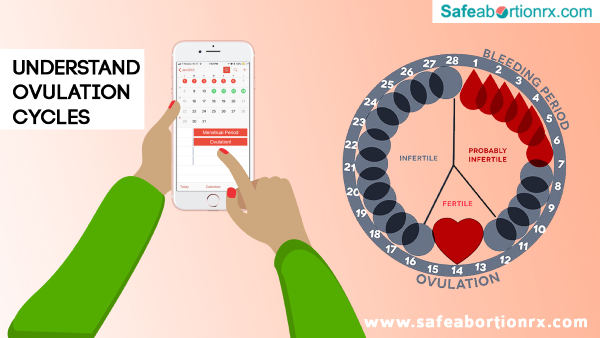

Using a combination of these methods is likely to be most accurate.
 ovulation predictor kits – hormone levels increase around the time of ovulation and this can be detected using ovulation predictor kits that measure the level of hormones in your pee.
ovulation predictor kits – hormone levels increase around the time of ovulation and this can be detected using ovulation predictor kits that measure the level of hormones in your pee.  your body temperature – there's a small rise in body temperature after ovulation takes place, which you may be able to detect with a thermometer. your cervical mucus – you may notice wetter, clearer and more slippery mucus around the time of ovulation. the length of your menstrual cycle – ovulation usually occurs around 10 to 16 days before your period starts, so you may be able to work out when you're likely to ovulate if you have a regular cycle In an average 28-day menstrual cycle, ovulation typically occurs about 14 days before the start of the next menstrual period. I had my period from 21st of October to 24thaldou I took pills one the first day of my ovulation after intercourse den days later I took anoda pill.now my period came again 2nd of nov till date. It can be difficult to get pregnant if ovulation always occurs before cycle day 11.
your body temperature – there's a small rise in body temperature after ovulation takes place, which you may be able to detect with a thermometer. your cervical mucus – you may notice wetter, clearer and more slippery mucus around the time of ovulation. the length of your menstrual cycle – ovulation usually occurs around 10 to 16 days before your period starts, so you may be able to work out when you're likely to ovulate if you have a regular cycle In an average 28-day menstrual cycle, ovulation typically occurs about 14 days before the start of the next menstrual period. I had my period from 21st of October to 24thaldou I took pills one the first day of my ovulation after intercourse den days later I took anoda pill.now my period came again 2nd of nov till date. It can be difficult to get pregnant if ovulation always occurs before cycle day 11. My days ovulation plus#
Your fertile window is the five days leading up to ovulation, plus the day of. If you want to work out when you ovulate, there are a number of things you can use: Early ovulation does not mean infertility, but it is something to look into. You ovulate about 12 to 14 days before the start of a new menstrual cycle. Ovulation is when an egg is released from one of your ovaries.







 0 kommentar(er)
0 kommentar(er)
